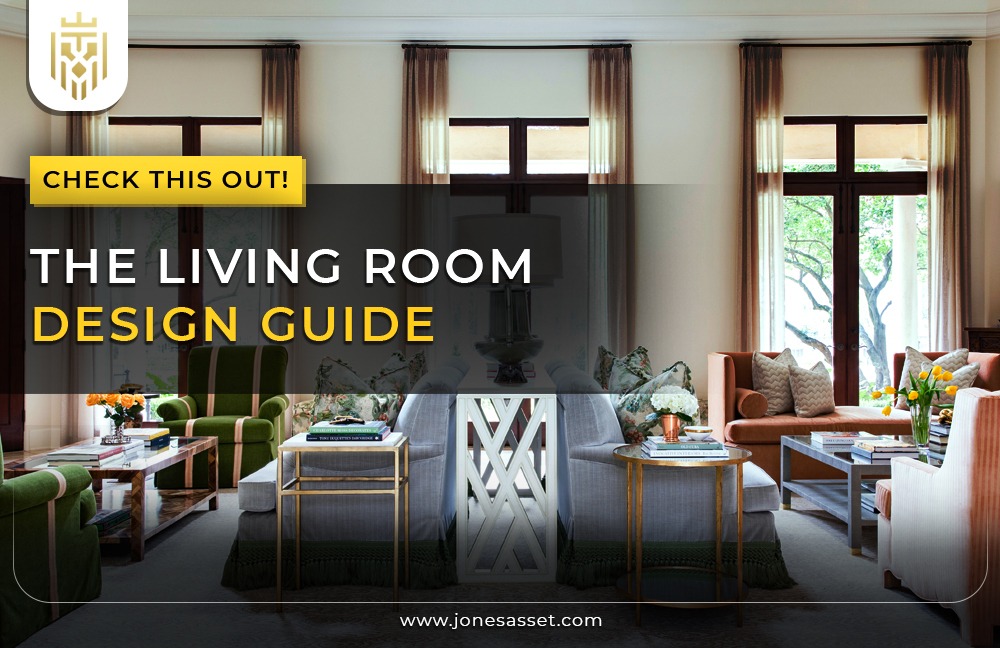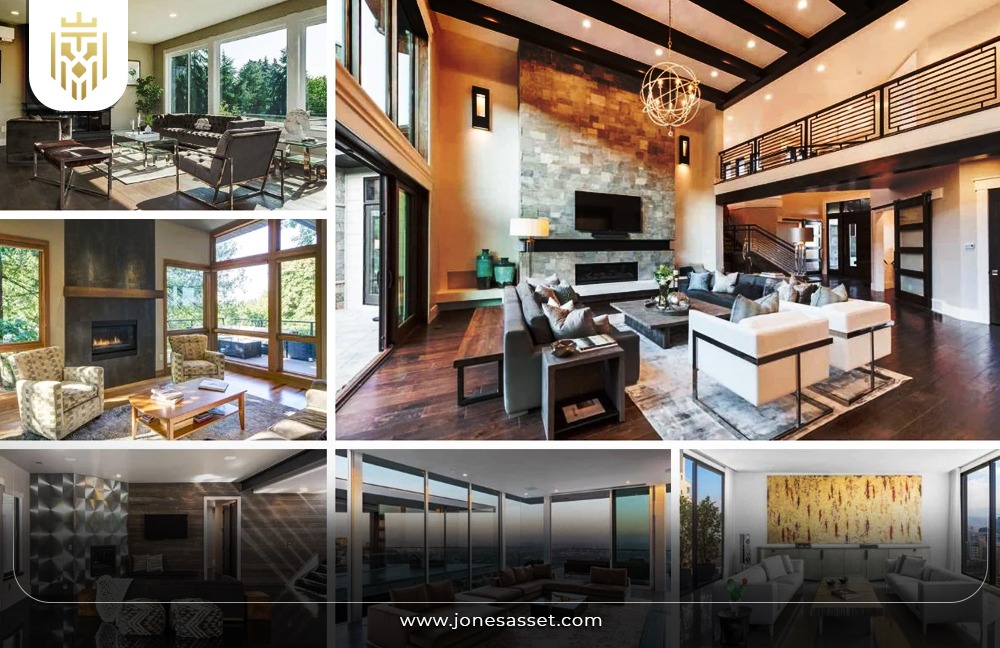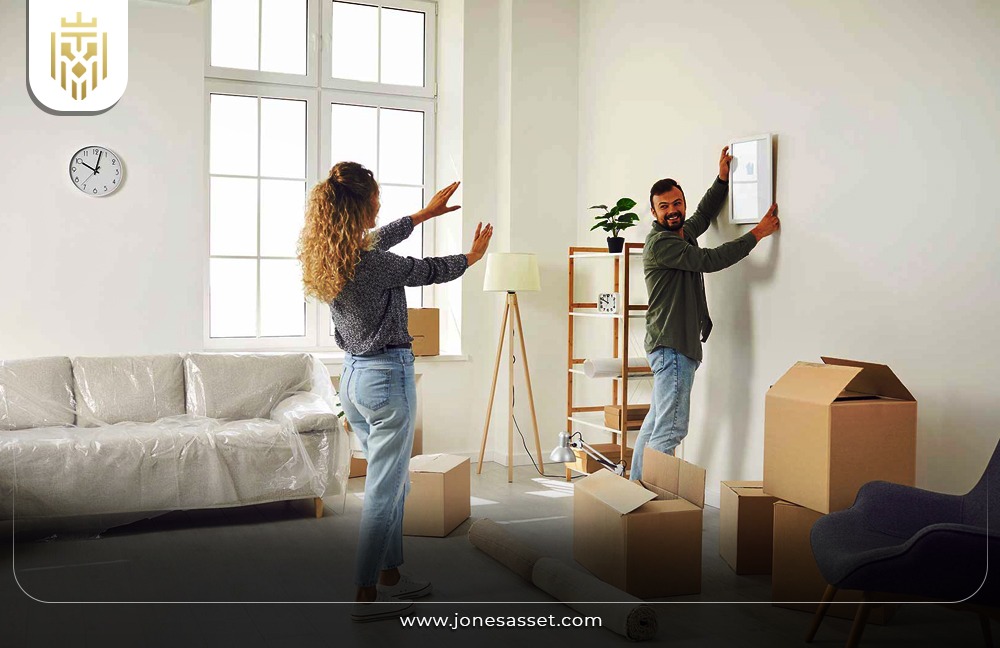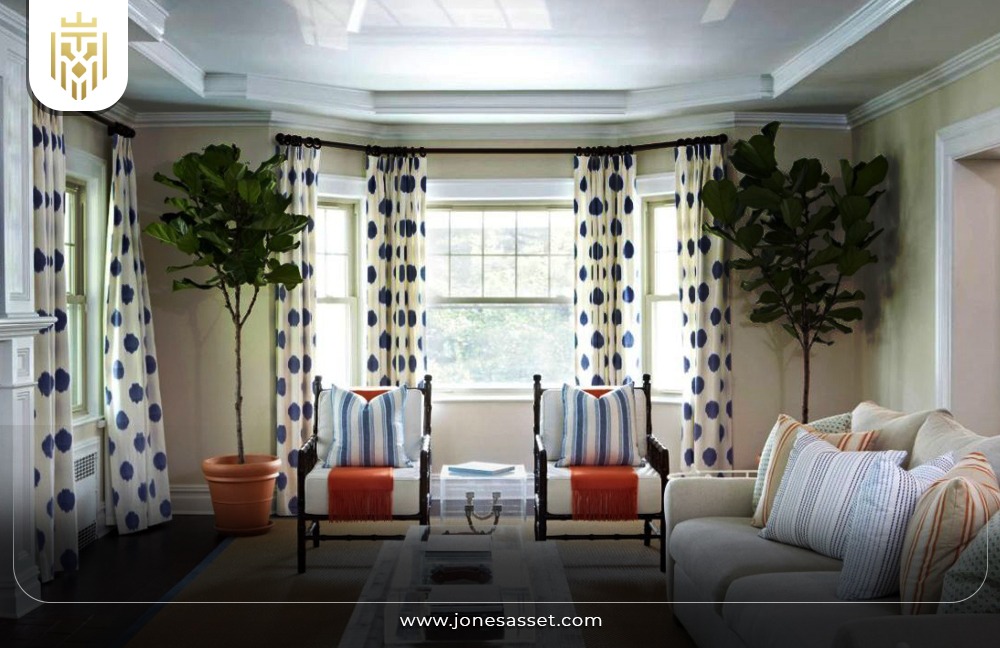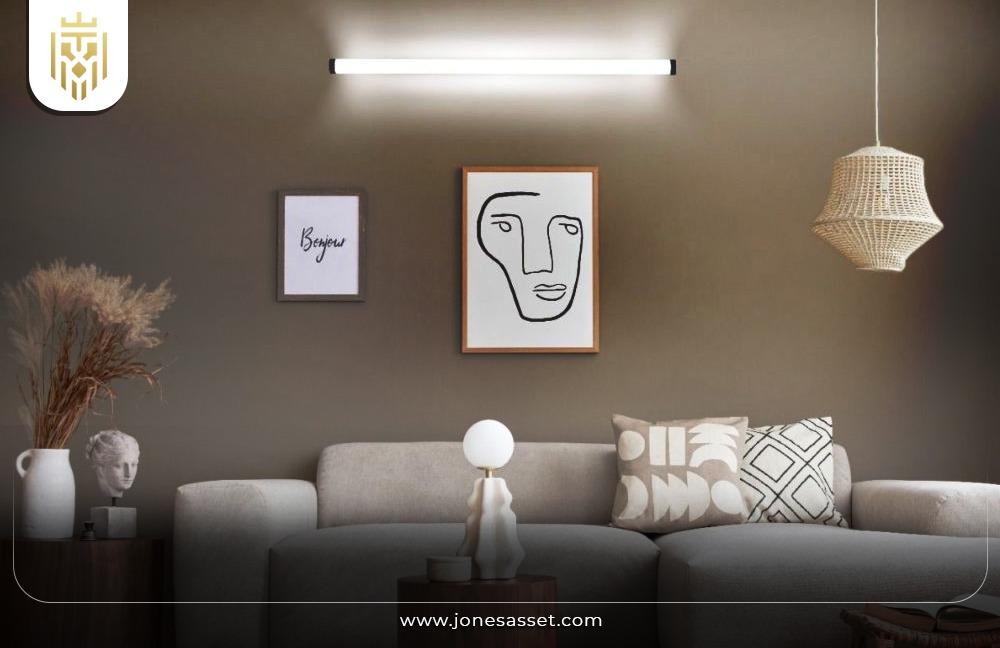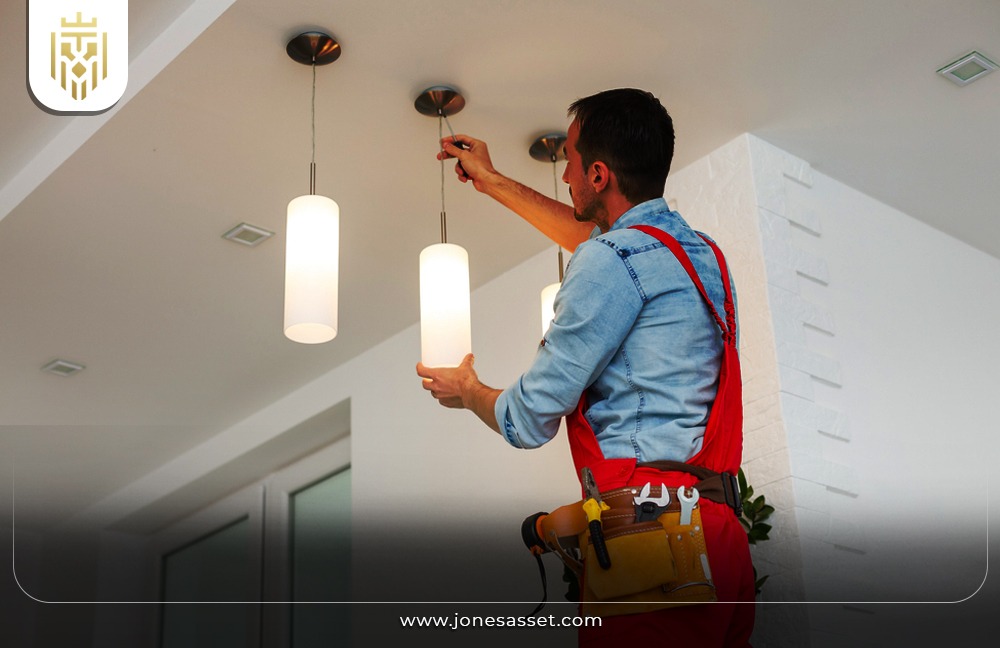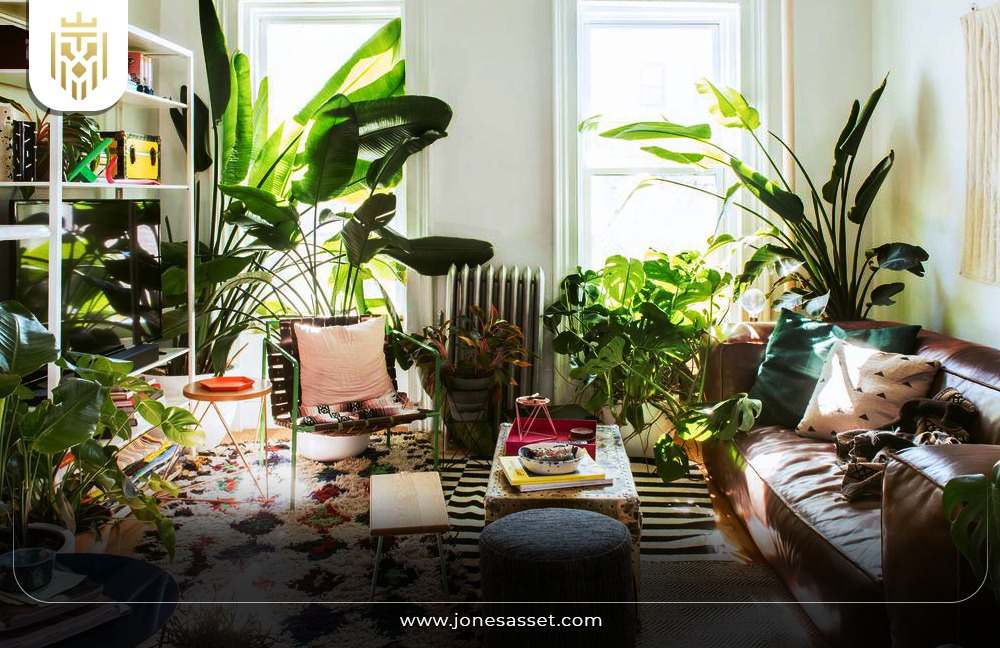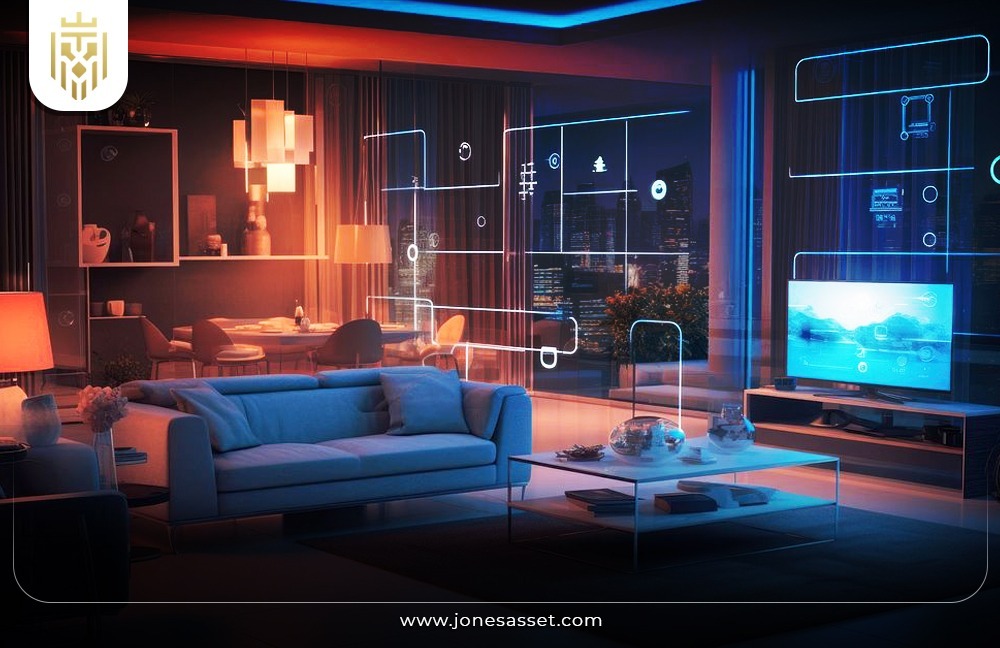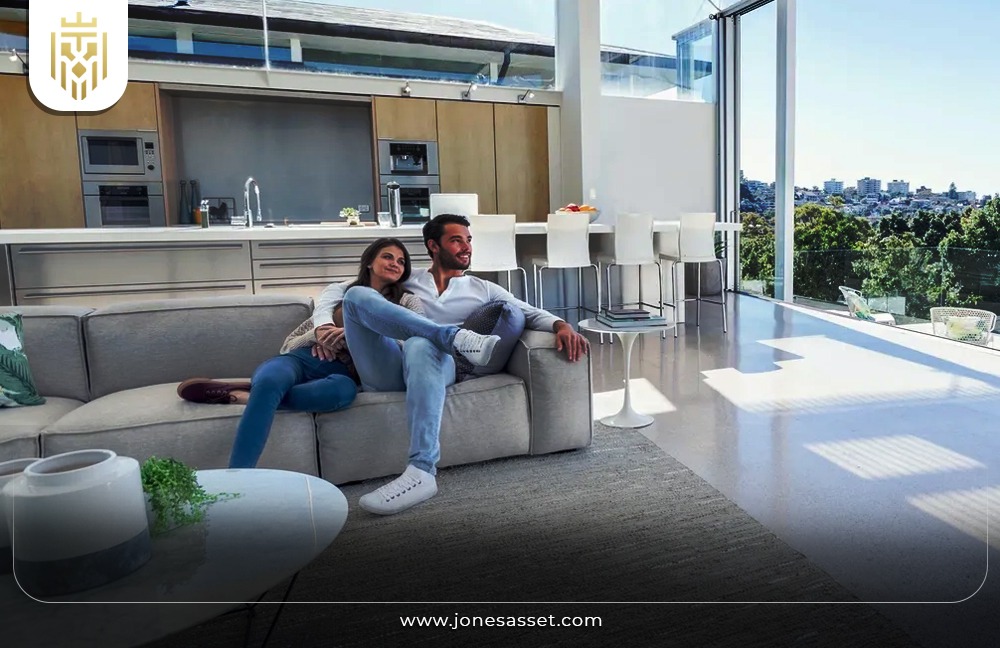Why Living Room Design Matters:
Ideas on how to design a living room are important because they help one determine the theme of the room and also help one plan how to create an atmosphere that is comfortable and conducive to social interactions. The furniture arrangement in the living room defines the kind of relaxation one expects in the room and describes the kind of reception for the visitors, besides giving out the kind of host one is. It also works towards enhancing the operations of your home to make what you do every day a lot more enjoyable and easy to accomplish.
Importance of Living Room Interior Design:
Living room refers to the specific area in the home and this is why its interior design is crucial since it has to be not only aesthetic but also functional. An optimal design of the living room serves both stylistic and ergonomic purposes, as a result, it provides an aesthetically pleasing and functional space. It can also enhance the value of the home and beautify the looks thus making your life more comfortable.
Impact on Lifestyle and Functionality:
Living room design entails consideration of lifestyle and functionality since it determines how the room is used. An orderly maintained and comfortable living room plays a key function in relaxation, social interactions, and other everyday pursuits. It also improves the flexibility of organizing space in a room and hence the room is convenient for purposes like entertainment, reading, or even family times.
Key Elements of Living Room Design:
Some of the most important and indispensable aspects of living room design include furniture, colors, lighting, and ornaments. Both of these components are also in harmony and cohesively develop an environment that is comfortable and accurate to each person’s preference while fulfilling his or her practical requirements. All of these contribute a special function to the general importance of improving the look of the room and its functionality.
Furniture choices:
Furnishing options play a central role in the layout and use of space in the living room as they set the tone. Therefore, when choosing furniture, considerations such as comfort, suitability to available space, and aesthetics are important. Proper choice of size, style, materials, and layout to ensure that the interior meets not only the functional requirements of inhabitants but also their aesthetic preferences.
Colour Schemes:
Color schemes set the tone and feel of your living room and the amount of available space in the room. The right choice of colors can cause the whole space to look larger, cozier, or more energetic. Cosmetic color combinations result in symmetrical and organized appearances while flamboyant colors can draw emphasis to certain parts of a property.
Lighting Options:
Thus, the choice of lights is crucial for creating a living room’s mood and usability. Natural lighting, general lighting, spotlighting, and joint illumination can make the environment appealing and suited to different needs. Appropriate room lighting is both functional and decorative, as it contributes to the overall mood and design, and helps in specific tasks such as reading, home entertainment or even napping.
Decorative Elements:
Objects like paintings, floor mats, soft furnishing, flower items of furniture, and the like add depth, hue, and personality to the environment. The decoration is also an important aspect since it contributes to the creation of the room’s atmosphere, promoting its appeal to the inhabitant as well as his/her preferences. These can also be used as a kind of focus or bring the room’s decorating concept together.
Planning Your Living Room Design:
Living room design entails a deliberate process of deciding on the best layout to have in the house to ensure that the appearance and usefulness are balanced. To begin with, one should evaluate the available space, determine their preferred interior design direction, and reflect on essential design components to include in the process. This makes your living room personal, unique, and functional and the final result is highly coordinated and comfortable.
Assessing Your Space:
Evaluating your space is the first and very important step that has to be taken to design the living room. This entails issues of size and density, areas of focus, and patterns of movement. An analysis also assists in determining the proper positioning of the furniture, appropriate colors, and other decorations so that you attain an efficient and aesthetically satisfying setting.
Measuring Dimensions:
It is important to take measurements when designing living room spaces to ensure that elements fit well and appropriately. It can help to provide some assurance that furniture will not be too large or out of proportion to the available space and that there is sufficient room to maneuver around it. To do this, take measurements of the length, width, and height of the room and also the architectural features of the room inclusive of windows and doors.
Identifying Focal Points:
Verging on design coherence is important and distinguishes objects from the random distribution, which facilitates the identification of living room focal points. These features can be a fireplace or an extended window or they can be fashioned in a room as an artistic creation or an extraordinary piece of furniture. Thus, drawing attention to specific areas makes the focus ‘stick to it,’ so to speak, and cohesively pull the room/space together.
Understanding Traffic Flow:
It is also crucial to identify traffic flow as a concept that affects the layout of a living room. This entails choosing plans that dictate the best ways of navigating throughout whilst avoiding interferences. Using furniture placement to promote optimum traffic design makes the space more practical and functional since people will be comfortable moving around the rooms.
Defining Your Style:
People should ensure that they capture their feel in style to come up with a good-looking living room. It is important for you to investigate different styles to find what connects with you. This is important whether you plan on focusing on contemporary or classic, simple or complex interiors, as a general style helps to narrow down choices for furniture and accessories or color and ornaments.
Popular Living Room Design Styles:
Living room design ideas: Modern, traditional, minimalist, and modern eclectic are some of the preferred living room design concepts among people. They include fabric patterns that could be the theme or desired look you’re searching for, which are major principles for enhancing your living room.
Modern:
Contemporary style of living room design is free from embellishments and frills and prefers more simplicity and sophistication. This refers to the extent of minimalism, which is now widely employed alongside functionality, and the use of natural materials such as the wooden and metallic. Modern style often contains clean lines and simple furniture and subdivisions into zones, giving the area a polished, somewhat minimalistic appearance that is both fashionable and functional.
Traditional:
Traditional living room design corresponds to ideal turning traditional furniture, deep tones, and gilding accents. It uses references to historical references and is focused on comfort and sophistication. Traditional rooms usually have patterned materials, intricate ornaments, and vintage accessories, giving that cozy and elegant feeling that reminds of ancient times.
Minimalist:
Minimalist living room design is as simple as it can get and involves the use of minimalistic items. Organizational design elements that are most important include a neat organizational structure, no bright colors, and a minimalist room. Interior designs are slightly more minimal with free space and light being the main themes of most interiors.
Eclectic:
Eclectic living room design is based on the incorporation of various trends in interior design when selecting furniture and decorative pieces. It accepts color, texture, and decor in its natural form that affords extravagance to the holders of the gift. Eclectic design is meant to be a style where a person pieces together, what is appealing to him; therefore, eclecticism reflects vibrancy and energy in a room.
Choosing a style that suits your personality:
To make the living room area warm and could be inviting it is wise to select a style that reflects your personality. Think about what colors, patterns, and types of furniture are in tune with your personality. Look at how you live your life and what you like and do not like, and choose a design style that you will be comfortable with.
Creating a Layout:
Layouting, for instance, involves placing furniture and designing specific sections of a building for the execution of tasks with consideration of comfort. Pay attention to utilities such as area, circulation, and pivotal elements. Original design allows for comprehensive use of space, contributes to functionality, and provides a balance and comfort
Arranging Furniture for Optimal Use:
Possibilities for placing furniture to provide comfort and free access most of the period involve setting up the furniture in a straightforward manner permitting conversation as well. Organize bigger pieces first by placing the large furnishings like sofas then you can incorporate the rest of the furniture around them. There should be sufficient space for the individuals in the group to move around and the position of the seats should suit the intended discussions.
Planning for Different Activities (Entertaining, Relaxing, etc.):
The main steps when planning for various activities entail general planning that entails the demarcation of zones in the living room. You should place furniture such as chairs for the purpose of talking and watching entertainment such as a television or fireplace. Small details of furniture and interior design; comfortable chairs and armchairs for recreation zones; adequate and pleasant lighting. Stackable and reversible furniture are great investments since they’re multipurpose
Furniture Selection:
One must carefully choose furniture for their living room since it determines the overall arrangement and design. These include the theme, flexibility of the furniture, and quality to guarantee that the furniture set meets the needs of the building and enriches the theme of the facility.
Essential Furniture Pieces:
Some of the important furniture for the living room include Sofas, Coffee Tables, Television Stands, and Storage furniture. These items comprise the necessities of a home to fit the simplest of requirements and the most basic of necessities.
Sofas and sectionals:
Sofas and sectionals are traditional furnishings that are usually located in the living room and they are used as comfortable sitting areas for individuals or a group of people. Depending on the appearance you wish for your bed, and the space available in your bedroom, you have to choose the size and style that will suit your bedroom and most of all comfort you need.
Coffee Tables:
Coffee tables constitute an essential piece of furniture; they serve diverse functions in a living room both aesthetic and functional. They furnish the necessary placement for drinks and books as well as add aesthetics with decorations. Select furniture that represents personal taste blends well with the rest of the furniture and has the required utility–the coffee table.
TV stands and media units:
Television stands and media centers are responsible for the arrangement of electronic devices and play a role in creating ambient in the room. Aim at selecting a unit that will complement the size of your television set while at the same time offering enough storage space for other equipment and peripherals. Pick the right design and material for your unit and the right color that would blend well with other pieces of furniture
Storage solutions:
Organization solutions for the living room depend on the amount of free space available but it’s critical to keep your space uncluttered. Examples are bookshelves, cases, and other moveable furniture and storage facilities concealed within other facilities. If you’re expecting to store a mass of files and documents, then you should go for storage that fits the description of what is needed and the environment where it will be placed.
Choosing the Right Furniture:
Several factors need to be taken into account when shopping for furniture to find the best match for the living room, these factors include size, design, comfort, and utility. With great consideration towards furniture, the looks, functionality, and overall comfort of the room are contributed towards to produce a good ambiance.
Considering Size and Scale:
It’s important to keep into consideration the size so that when purchasing furniture it has the proper proportion for the living room. Determine the size of the room and buy furniture that does not result in an overcrowded or underfurnished look. Distribute greater furniture pieces with smaller ones to avoid compromising on the harmony in the particular room.
Matching with Your Design Style:
Knowing a design style and ensuring the furniture selected complements the style intended for the living area. Select the furniture to align with the selected style to ensure one gets modern, traditional, minimal, or eclectic style furniture. It is important that the furniture pieces that are chosen are consistent and have elements that make them look related to each other so that they prevent an eyesore in a given room and add to the beauty of the room.
Comfort and Functionality:
The cardinal rules of furniture selection come down to two things – comfort and practicality. Choose ones that de-mold and exhibit ergonomically support as well as suit the lifestyle you lead. Make sure quality material is used as well as good construction methods as this would preserve the furniture for a long time.
Arranging Furniture:
Furniture placement is the ability to create flows, which are essential means in facilitating conversations, traffic patterns, rhythm, and addressing room symmetry and proportion. Proper planning also contributes to the comfort of your living room while also ensuring how easy it is to maneuver around the area.
Creating Conversation Areas:
Conversation areas require the identification of sitting arrangements that bring convenience for people held in a particular area to easily converse. Place sofas and chairs in a manner that is directed at each other or directed at a focal point such as a table for placing cups and saucers. Check to make sure there is sufficient space for individuals to move and that the chairs are not too far apart so persons can easily converse without undue stress.
Balancing The Room:
Bed placement also needs to be balanced to avoid a cramped interior that can overwhelm the space without being empty enough to feel secluded. Starting with the basic placement of furniture, do not overcrowd any part of the room and ensure you have a good balance based on the traffic and main focus points of the room. Make sure there are large pieces and small pieces such that the eyes can move around the wall and also in order to maintain symmetry.
Tips for Small Spaces:
Choice of furniture for the small area – versed and compact. In dealing with the design of small rooms, the following rule must be followed – all as much as possible, but not high. Choose furniture that comes with storage in it, for example, the ottoman or coffee table with compartments. Known for bringing in some brightness the use of light colors and mirrors in the house helps in creating a feeling of spaciousness.
Color Schemes and Textures:
Colors and surfaces are critical to establishing the tone and image of your living room and contribute to the general ambiance. For instance, when choosing colors, patterns, or fabric, one can avoid making negative comments, thoughtfulness creates a nice physical environment to suit the needs of the people.
Selecting a Colour Palette:
A color palate is a range of colors; shades and tones that depict the design of the living room. Choosing the right colors is a success of a composition, that defines the mood and creates an integral picture. When making the decision on what colors to choose, there are some general things to take into consideration such as the size of the room, amount of natural light, etc, and of course personal taste.
Popular color schemes for living rooms:
Some trends that are often seen when decorating a living room are many colored color schemes that might be neutral, bright, or cool. Thus, the choice of the middle hue includes the shades of the skin color, ranging from nut to pale, and the near tones, such as beige, gray, and white, which give the spectator a possibility to rest his eyes. Power colors such as navy, emerald, and burgundy keep things dramatic and inject character
How to Choose Colours that Complement Each Other:
Here is how they should be selected: first, pick the main color and then choose other compatible shades that would look great with it. Use the color wheel for guidance: Complementary hues (diametrically opposite) make contrast and are sharper, while the analogous hue (sides) are softer and less contrasting.
Using Textures and Patterns:
Adding textures and patterns also means that the living room will look deeper and not plain flat to the eyes. They add living levels to the space that look more interesting and can give a sense of depth. The integration of different types of textures and possibilities with patterns can greatly help to turn a rather dull design concept into an inviting stylistic solution.
Adding Depth with Different Materials:
Depth can be accomplished by utilizing different materials in a variety of ways, for example through the use of wood, metal, glass, and fabric with varied consistencies. For warmth and comfort use rich materials such as velvet or wool, for a pure and smooth look use silver or glass and to bring organic experience use wooden or stone finishing. Such changes make it possible to create several branded, attractive, and multi-leveled space images.
Mixing Patterns Effectively:
Combining patterns on a small scale can work well only if there is harmony or if there are some overtones. Astonishingly adopt different sized classes of the very same print kind; for instance, pair large floral prints with small geometric designs. Keep to one theme of color so that you can keep all the patterns in the same level of synchronization. Applying them in a tactical battle, we define targets, which we want to draw attention to and try not to overload the space too much, making the result balanced.
Incorporating Textiles:
Through the use of textiles, comfort is also brought about, and elegance and hues as well as surface characteristics introduced into the living room. Furniture such as rugs, curtains, and cushions are crucial aspects of the room because they play a vital role to do with looks as well as ease. Select the right textiles that go hand in hand with your chosen color pallet and the style of the overall design.
Choosing Rugs, Curtains, and Cushions:
When it comes to selecting rugs, curtains, and cushions, one is supposed to make a decision about the pieces that they desire depending on the style that has been chosen to suit the comfort of the people using the house. Rugs signify certain portions and provide comfort and beautify the area where placed, curtains help in controlling the entry of light and provide privacy, and cushions similarly give comfort and act as decors.
Co-ordinating Textiles With Your Colour Scheme:
Applying textures to your fabric selection helps to ensure that the color selection blends well. Choose background clothes that meet or relate to your base colors and secondary decorative colors. Balance: Multiple patterns and textures are okay if used in moderation, but don’t overdo it and have them clash. Make sure fabrics coordinate with furniture and other furnishings in order to blend well and make the living room visually appealing.
Lighting Your Living Room:
Living room lighting entails the placement of various lamps in a way that offers adequate lighting and accentuates the room’s atmosphere and practicality. Thus, by mixing techniques and choosing suitable lamps, the area may be enhanced, and fixtures for the purposes can be provided.
Types of Lighting:
This is where the wall washing lighting comes in to provide a different kind of lighting in the living room. This way it is possible to make sure that a person is comfortable, all the functions can be performed with the necessary equipment, and everything looks nice.
Ambient Lighting:
The first type of light is called ambient lighting, its function is homologous with that of general lighting, however, it creates a moderate degree of brightness which does not cause glare. It usually entails the lamps that are built-in in the ceiling or center of the room like the ceiling lamps or chandeliers. So as much as possible, ambient lighting serves as the foundation where the room is provided with sufficient lighting for normal activities.
Task Lighting:
According to its function, it can be subdivided into task lighting which illuminates specific areas where a particular action is carried out such as reading, working, or doing hobbies. Proper task lighting is the best way to minimize the effects of eye strain and improve the efficiency of the task.
Accent Lighting:
The most common application of accent lighting is on the architectural details, as well as on paintings or any kind of designed art piece. Ideally, it mitigates flatness in the room by adding a certain focal and depth to the scheme of the room. Examples include spotlights or picture lights and LED strips.
Choosing Light Fixtures:
Selecting the right lamps is a critical factor that considers lighting and the significance of living room illumination. Another aspect that should not be forgotten is the location of the fixture and the number of lux or watts in each type of fixture that is used.
Ceiling Lights:
These include general lighting such as the ceiling lights that include the chandeliers, pendant lights, and recessed lighting. It is suggested to select appropriate lighting fixtures that will harmonize with the interior design and provide sufficient illumination in the room. One of the ways is to have lighting that is able to be similarly adjusted to provide a broader range of options.
Floor and Table Lamps:
Table and standing lamps are ambulatory and ductile lighting means. They can either be permanent and focus on accomplishing tasks or non-fixed which is meant to create an atmosphere. Choose lamps that meet the style of the room and position them to be as useful and appropriate for the task as they are pleasing to the eye.
Wall Sconces:
Here one can find two types of lighting sources: general and selected general. They are useful for illuminating framed art, positioning near mirrors or simply creating general lighting for specific living space zones. Select sconces that will fit your room color scheme and which will be enough to light up the particular area.
Creating a Lighting Plan:
Lighting design is organizing and coordinating equipment so that they provide facilities and create an environment that is wanted. When selecting and designing the lighting in the room, one must also take into account the layout of the space, the activities taking place in the room, and the design of the space.
Layering Light for Functionality and Ambiance:
Layering light means a systematic employment of ambient light as well as task light as well as accent light for a perfect and well-balanced lighting system. Ceiling lights, floor lamps, and wall lamps all offer distinct lighting and serve various purposes in order to complement the room both as a utility space and as a social area.
Using Dimmers and Smart Lighting:
Lamps and mood lighting permit one to select the kind of brilliance one wants in the living room. As for other electrical devices in the house, it is advisable to install dimmer switches as they allow changing the intensity of light depending on the tasks to be performed.
Decorative Elements:
Wall treatments like paintings and detailed works also help to make your living room more specifically yours and make it more interesting stylistically. Select the pieces which had a personal connection with you and which fit well with your theme.
Wall Art and Decorations:
Wall art and decorations serve as vital components for any interior space since it determines the amount of beauty in the environment. They blend with individual personalities enforce the looks and feel of the room and can even accent structures within rooms. As for the choice of art, it is reasonably diverse and interesting to combine paintings, photographs, sculptures, and more.
Choosing and Arranging Artwork:
When selecting artwork it is crucial to choose one that fits personal taste and the color of the room. Display objects at eye level and should also think in terms of groupings such as in the gallery display. A work of art can be an attention grabber in a room yet cannot overwhelm the size of the wall or the other furniture pieces in the same room.
Using mirrors and other wall decor:
Mirrors are special in that they amplify the active matter in which they are located and create an idea of space. This can be best achieved by placing them where they will receive natural light from the outside world, like where there is a window or in places where there is a light. Other elements to consider are – shelves or any other unit that can be hung on the wall, as this will bring additional aesthetics.
Accessories and Personal Touches:
Garnishes and accents create the identity of the space you live in, especially, the living room. Things like plants, elaborate sculptures, and mementos personal to someone lend life and soul to the interior.
Incorporating Plants and Greenery:
Having plants and flowers in your living room improves the overall appearance and adds freshness to the place. Everyone who wants to buy a plant should make sure he chooses a plant that is appropriate for the light conditions of the house and for the care that you want to provide.
Using Decorative Objects to Reflect Personality:
Accessories like vases, sculptures, and souvenirs are products that in some way hold a part of you or a part of the story you want to tell. Make sure you have visible items that are personal and fit the overall theme you want for your room. Arrange items in the group in odd numbers and also mix heights for the proper grouping appearance.
Seasonal and Occasional Decor:
Seasonal and occasional decorating means the change or modification of living room decor throughout different seasons of the year. Change articles of clothing, bedspreads, curtains, tablecloths, pictures, candles, flowers, etc. to reflect different holidays and/or changes in the season.
Updating Decor for Holidays and Seasons:
Changing the decor according to the holidays and seasons makes the living room more engaging and decorated. Some of the implementation includes employing themed pillows, throws, and centerpieces. Select items that you can quickly change and preserve to be taken to and from, guaranteeing convenient changes to every new season.
Tips for Quick and Easy Changes:
If you want to be able to change the look within a shorter period of time, try to focus on accessories such as cushioning, floor coverings, and wall hangings. If you are able, try to stick with neutral base colors and have any accent colors or designer themes on the softer materials such as cushions and wall art.
Enhancing Functionality:
Here are several ways how you can add functionality to your living room: Adding technology – with television, internet, and media playing an increasingly prominent role in our lives, it’s not surprising that living rooms are incorporating technology into these gadgets.
Technology Integration:
It turns your living room into a place that is more convenient and fun as you incorporate technology into your lifestyle. Organise visions and exponential attributes that enhance day-to-day operations and the fun in things.
Setting up Entertainment Systems:
The main procedure of setting up entertainment systems includes arranging your television, sound systems, and whatever game consoles you own for visual and sound purposes. For cables and wires, it’s advisable for you to incorporate cable management solutions so that they may be well arranged. Laptops and other such devices necessitate furniture that has space for them and also offers sufficient aeration.
Smart Home Features for the Living Room:
App-enabled products that are specific to the living area are smart lights, smart thermostats, and smart voice controllers. This feature of the Smart Home includes convenience, energy efficacy, and improved user command. Blend them with other furniture to complement your living space design to ensure you have a modern and resourceful living space.
Storage Solutions:
There are many storage types and smart organization ideas for the living room that will help to avoid mess. Select appropriate colors and designs for the furniture and decorations that fit within the allotted space.
Maximising space with built-in storage:
Try to optimize the space in such ways as having shelves, cabinets, or media units. It is a great solution to provide plenty of space that fits perfectly your current interior. There can be options with additional possibilities to customize the room according to its size and its design.
Stylish and Functional Storage Ideas:
Pleasing to the eyes and multifunctional accessories are baskets, ottomans that contain compartments for storage, and shelves. Choose these options to store your items and make them invisible but increase the aesthetic appearance of the room. Select cabinets that complement other furniture in your house and offer the necessary storage space you require.
Creating Multi-purpose Spaces:
Designing them entails creating spaces that are fit for more than one use-like living and working zones as mentioned above. They maximize space and ensure that the available space can be used in the best way possible.
Combining Living and Work Areas:
To subtitle the separation of living and work areas, certain aspects need to be followed when placing furniture and arranging the space. Collection or organization of space with the help of parallel sceneries, furniture, or other items to enhance the divide of the room into distinct areas. This always calls for the use of furniture that can serve multiple purposes in order to avoid clutter.
Designing for Flexible Use:
Assigning use involves choosing of furniture and interiors that can be easily transformed to fit the users’ needs. Some examples of transitional furnishings include foldable tables, versatile seating arrangements, and transportable storage units. These can be picked in a way that rearranges the space for different activities.
Final Touches and Maintenance:
Finishing touches and minor repairs play the role of keeping your living room as visually appealing and practical as possible over the years. Ensure that all items and information are in the correct locations, organize some change processes, and continue cleaning and changes to refresh the design.
Final Walkthrough:
The final touch as you want your living room to look is crucial and is usually done by doing an initial walkthrough. It entails physically comparing the proposed placement of furniture and other decorations to ensure that all the items and decorations correspond.
Ensuring Everything is in Place:
On the final check, make sure all furniture pieces and decorations are placed in the right manner, as it would deter exploitation attempts. Confirm that the lighting system is operational, the accessories are well arranged and the entire space looks well positioned.
Making Final Adjustments:
Don’t forget to make final adaptations to enhance ergonomics and fancy looks. This may require moving furniture around so that traffic lanes are clearer, modifying light sources in order to illuminate a particular area properly, or placing objects such as cushions or potted plants on chairs to give the room a more aesthetic appeal.
Maintaining Your Living Room:
Living room maintenance is primarily accomplished through the routine cleaning of the area as well as occasional aesthetic enhancements to the room’s layout and décor. Proper care lasts longer meetings with furniture and interior design, it looks good and aesthetically in the room.
Cleaning and care tips:
Event cleaning also involves sweeping floors, washing floors, and cleaning rooms, carpets, and furniture among others. For one you should clean using different cleaners that are appropriate for different kinds of materials since some might be damaged if cleaned using the wrong cleaner.
Keeping your design fresh:
Maintaining the liveliness of your living room design comes from constant alteration of the accessories, movement of furniture around the room, and installation of seasonal decors. Accomplish new colors and patterns by operating pillows, throws, and blankets, as well as update the atmosphere of the room by changing the artwork and having indoor plants at regular intervals.
FAQs:
1. How to design a living room step by step?
Sizing your space: It is now high time that you took your time and tried to evaluate and determine the size of your space. Develop personality in terms of style and select the hues. Chosen furniture must be functional and placed according to one’s needs. Additions and especially the illumination on an object should be used properly. Add textiles and accessories.
2. How to arrange a living room?
While outlining possible interior decisions, it is convenient to identify focal points such as a fireplace or television. Sitting arrangements should therefore be considered and fashioned in a manner that encourages people to interact freely. Ensure clear traffic flow. Make sure there are small pieces of furniture in every corner of the rooms and use rugs to create boundaries.
3. How to design a living room for beginners?
The first obvious idea of how to create a timeless interior is to select a medium-colored base. Choose versatile, essential furniture. Layer lighting for functionality. Make some enhancements to the furniture with the ornamentation of home accessories.
4. How to design a simple room?
It should be more simple and not complex with an emphasis on neutral and basic colors. Choose essential, functional furniture. Incorporate layered lighting. From the quite simple home, the next addition would be to incorporate minimalistic furniture and finally, people’s portraits and pictures.

